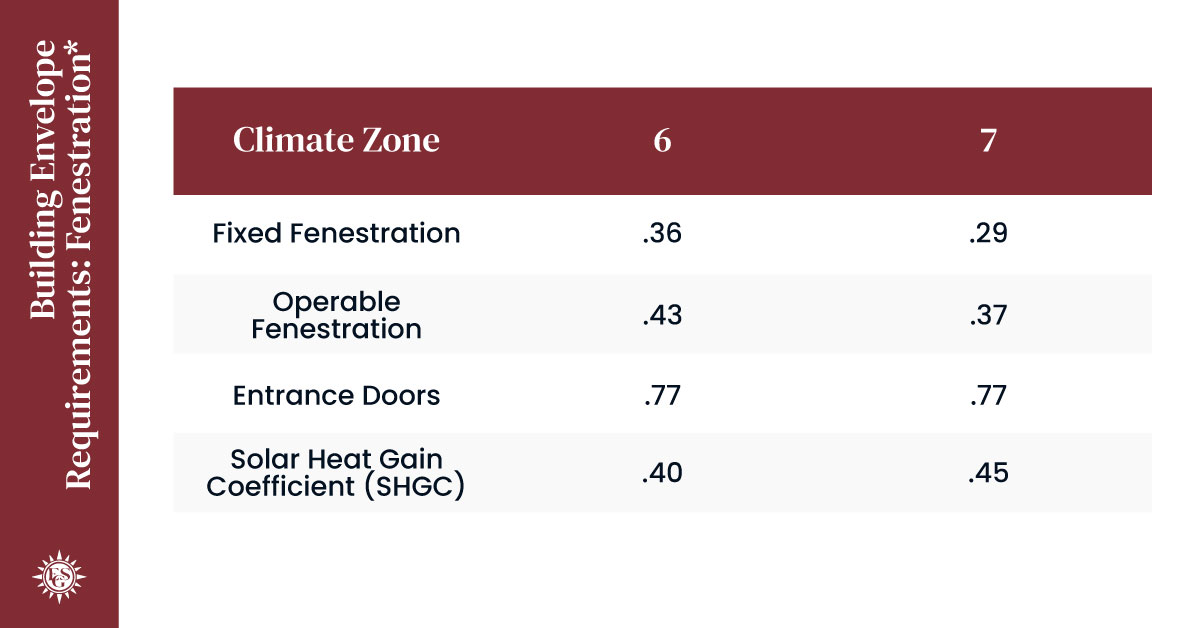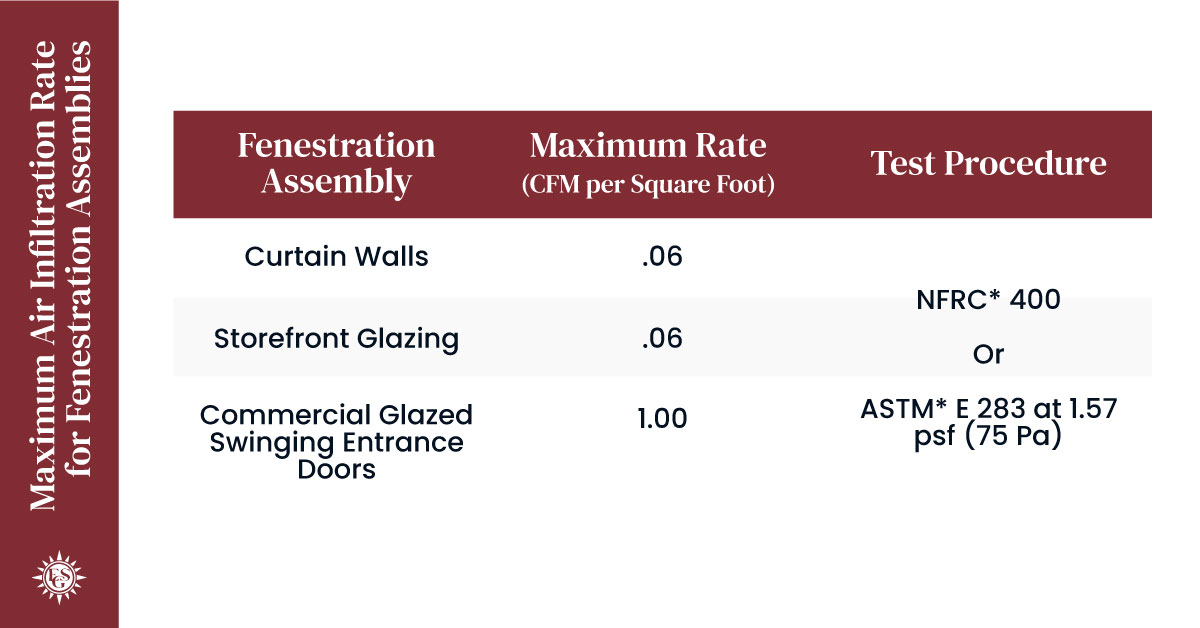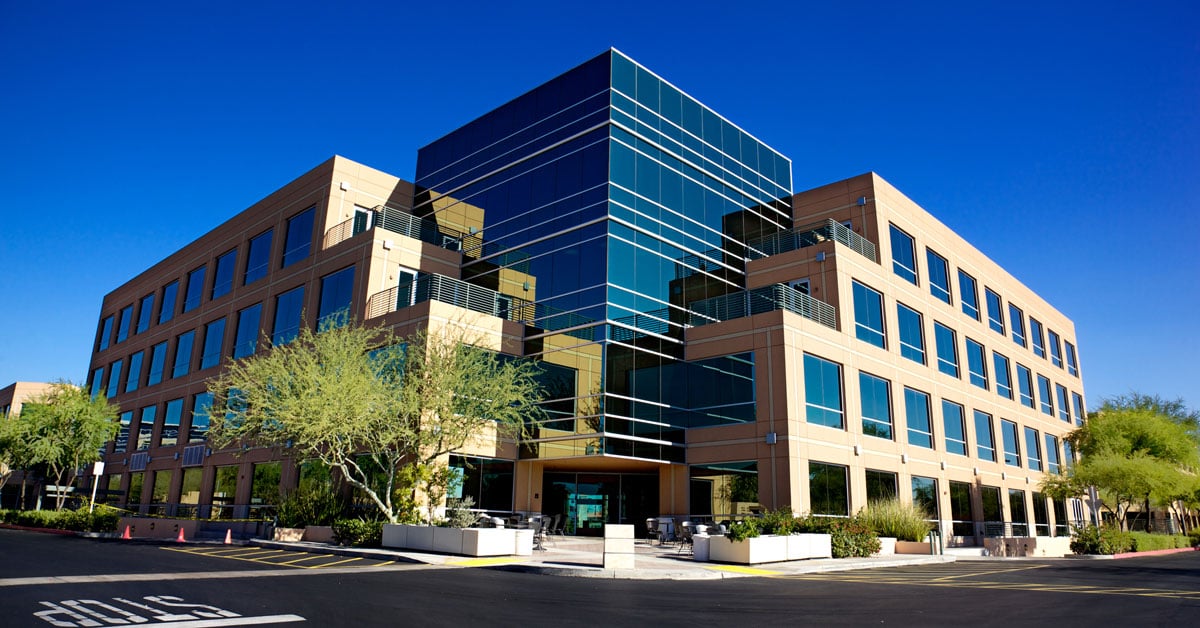Can I start by stating the obvious? No one — and I mean no one — likes red tape. But commercial buildings account for a whopping 35% of the energy consumed within the U.S. Energy is increasingly expensive, and our important resources shouldn’t go to waste.
The 2015 Minnesota Commercial Energy Code outlines the standards of energy efficiency in building design and construction, including requirements for windows, storefronts, entrances, and glass. The code is 43 pages long, and only some of it pertains to glass and glazing. So in this blog, I’ll summarize what you need to know if you own a commercial building in Minnesota and are researching glass service or repair.
What Are High-Performance Glazing Systems?
A high-performance glazing system is a way of increasing energy efficiency in commercial glass products. There are a number of different strategies you can use to accomplish these goals:- Low-emissivity (Low-E) coatings
- Insulated glass units (IGUs)
- Thermal breaks
- Shading devices, like awnings or tinted glass
What Are the Benefits of Energy-Efficient Glazing Systems?
As our technology improves — or our energy system responds to different challenges — codes will change.The current energy code requires using energy-efficient glazing systems because of the enormous benefits it offers to commercial properties:
- Improves insulation
- Reduces heat transfer from the outside air to the inside, and vice versa
- Minimizes heat gain from the sun shining through glass windows and doors
Sections of the MN Energy Code That Pertain to Glass and Glazing
High-performance glazing systems are a particular area of focus in the 2015 energy code. As you can see in this map, southern and central Minnesota are included in Zone 6. Our customers in Mora and Milaca, however, are in Zone 7, which has slightly different requirements.

Building Envelope Requirements: Fenestration*

*Fenestration refers to any building product with glass or other transparent or translucent materials.
Additional Building Envelope Requirements
The vertical fenestration area (not including opaque doors or spandrel panels) shall not exceed 30% of the gross above-grade wall area.In Climate Zones 1–6, a maximum of 40% of the gross above-grade wall area can be vertical fenestration, as long as:
- No less than 50% of the conditioned floor area is within a daylight zone.
- Automatic daylighting controls are installed in daylight zones.
Additions, Alterations, Renovations, or Repairs
Generally speaking, additions, alterations, renovations, or repairs to a commercial building must comply with the commercial energy code. But there are two exceptions to glass repair and replacement if the energy use of the building is not increased.- Glass-only replacements in an existing sash and frame.
- Replacement of existing doors that separate conditioned spaces from the exterior shall not require the installation of a vestibule or revolving door, provided, however, that an existing vestibule that separates a conditioned space from the exterior shall not be removed.
Maximum Air Infiltration Rate for Fenestration Assemblies

*NFRC stands for National Fenestration Rating Council
*ASTM stands for American Society for Testing and Materials
Are There Any Drawbacks to Commercial Energy Codes?
Laws, like the people who make them, aren’t always perfect. Energy codes are designed to do good things for commercial properties in the long run, but there are a few unintended consequences for businesses.
Fewer Bids
Despite the clear benefits of energy-efficient glazing systems, some commercial glass and glazing companies may not bid on projects that require compliance with the energy code. This is either because these companies may be using less energy-efficient products, or because they’re not familiar with the requirements of the code.
Unfair Competition
Unfortunately, companies that do follow the energy code may be passed over for some projects in favor of companies that don’t due to differences in price. Companies that don’t use code-compliant materials or cut corners are often able to offer a lower bid. If you own a commercial property, make sure you ask a glass company if their solution will be in compliance with the energy code so you can make an informed decision.
Why Consider a Custom Glass Company That Follows the Rules?
Like most things in life, you tend to get what you pay for. A glass company that complies with the energy code may be more expensive in the short term. However, over time, you’ll see lower energy costs and improved building performance because they’ll use superior building materials.
Of course, there are other factors to consider when selecting a glass and glazing company for commercial projects. You should look into their expertise, reputation, their customer service, and their ability to provide custom solutions that meet the unique needs of each project.
At East Side Glass, not only do we comply with the MN Commercial Energy Code, but our expert team has supplied and installed the glass, windows, and storefronts of many of our area’s most iconic buildings. We make sure our commercial clients work with the same project manager from bidding through the final installation to ensure the entire process goes smoothly.
Got a project that needs doing? Add us to the mix. Our estimates are always free!
